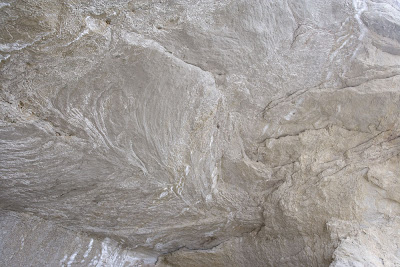With the quality of inkjet prints approaching that of silver prints, and frankly already exceeding the quality of most platinum prints (yes, I know, heresy, but I'm convinced it's true none the less), it's time to rethink the whole business of how much a print is worth.
Some things to ponder:
1) Very little work is involved in making one more inkjet print.
2) Inkjet prints are innexpensive, even allowing for amortizing the cost of the printer, considering ink and paper, even factoring in spoiled prints (if my 7600 puts one more drop of black ink on the edge of a 24X26 inch print, I'll scream).
3) Assuming some detailed instructions, anyone can make another print - including your descendents, even your spouse, your assistant, lover, gardener or whoever you wish - since the quality is set in the file, barring any obvious printing flaws, every print is going to be perfect.
4) Inkjet prints don't need infinite protection - they are replaceable - especially if priced reasonably. As Jeff said, forget the glass, I can always make another print.
5) For the largest part of the world, photographs form decoration, not holy relics, not priceless masterpieces - when you are ready for a change - either throw away the print, or even better, pop it out of the frame, store it on a shelf and recycle the frame for the next photograph - thus ensuring an ongoing market for our photographs - if we price things reasonably.
6) Inexpensive prints is a concept incompatible with current gallery practice. It doesn't have to be, but it is, and getting the galleries to change the way they do business is going to be challenging, if not impossible. It may simply be better to do an end run around them - if they can't keep up, well, think Neanderthals. Of course, they could change - instead of catering to 2 - 3 clients a day and selling one print a day and not always making a profit, galleries could offer a choice of hundreds of prints at reasonable prices and have 30 customers a day buying 45 prints a day. That's not impossible, I was well on my way to that kind of sales at the Farmers Market.
So, with the above in mind, just how expensive should prints be? Do better photographers charge more, or simply sell more prints? A good car, TV, sofa, and just about any other product typically cost more than a poor one - but not that much more, not usually more than double the cost of a cheap one, and often because of labour and cost of materials is higher - I would argue that photographers of reputation shouldn't charge any more than the next fellow. Their reputation doesn't make their next image any better, only their skill can do that - let the consumer decide which is the better product. Odds are the better photographers will far outsell the lesser ones and reap a reward unprecedented in photography.
Quality inkjet paper costs up to $5 for 13X19 paper. Pigment ink to make an image on said paper with a generous white border, another $5. Depreciation on the printer, say $2. Allowance for damaged prints, say an overrun of 50%, which is probably quite high. Cost of getting the first perfect print - substantial, say 10X the cost already, but is it reasonable to expect the purchaser of one print to pay that entire cost, and for every subsequent purchaser to pay it all over - assume that this setup cost is spread over the first 10 prints sold, so basically doubling the cost of the print - after that - gravy for the photographer - anyone who can sell more than 10 prints deserves it.
O.K. so we have an individual print cost of $12, setup of another $12 for a total of $24. Don't forget packaging, - say mylar bags and backing of acid free foam core (that's how I sold my prints at the market). That adds another $3. We're now up to $27. Of course, we haven't paid the photographer, nor amortized his camera equipment or computers and so on. The retail trade is generally based on a 50% markup to survive - that is, whatever you buy the product for, you retail it for twice as much, give or take. With Walmart and other giant sores, I dare say that's no longer valid, but it will do for a start.
So, if someone phones and offers to buy a print, they can have a 13X19 bagged print for $54 give or take. I have been charging $69 so that's not too far off. Given that I have probably forgotten some costs - say business cards, shopping bags, advertising, back of print info sheets, and a myriad of other items, the $69 figure for a 13X19 print is probably pretty close to right and less than $50 is probably hobby pricing - ie. not meant for making any income. An 8.5X11 print would cost around $35.
In the current world - there are photographers selling inkjet prints through galleries (and therefore not anywhere else because the gallery wouldn't like it) for $500. I really can't see this lasting much longer. Sooner or later common sense will prevail.
Now, if we add matting, framing or other services, well that's a whole other story, but what if that imaginary gallery that decided to switch rather than fight, stocked some standard sized frames, easily loaded and reuseable, for modest prices - say $40-$100 instead of the usual $150-$300 they normally charge for a custom frame, well, I suspect they could attract a fair number of customers.
Food for thought.


















































